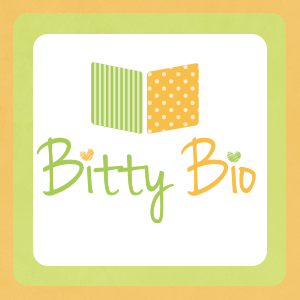Communication Temptation
28/07/15 09:00 Filed in: Development
Wondering how to get your child talking? Entice children to talk by creating what is called Communication Temptations. This strategy can be used to help late talkers start talking, helps a toddler begin using two-word phrases, or increases the chances that a young child will begin communicating.

Communication Temptation is pretty much what it sounds like. An environment is set up to tempt children to communicate with us. A child is much more likely to communicate if they have a reason for doing so!
Setting up communication temptations is easy and there are lots of ways to do so, such as:
Each of these ideas has one thing in common - the environment is set up so that a child is tempted to communicate about something ("no, I don't want that!" "what is that?" "yuck" or "bye!").
Another form of communication temptation involves enticing a child to request. This is a great place to start for any child, because requesting is often the easiest form of communication.
The steps to this type of communication temptation are as follows:
No matter what your child's level, communication temptations are often a very successful way to create opportunities for your child to advance their communication skills.
Now get going and begin the Temptations!
Adapted from:
Wetherby, A., & Prizant, B. (1989). The expression of communicative intent: Assessment issues. Seminars in Speech and Language,10, 77-91
Setting up communication temptations is easy and there are lots of ways to do so, such as:
- Offering your child something to eat you know they dislike.
- Putting a toy in an opaque bag and shaking it to get the child's interest.
- Putting your child's hand in something sticky or gooey.
- Waving and saying "bye" as you put toys in a box three times, then pausing right before you put away the next toy.
Each of these ideas has one thing in common - the environment is set up so that a child is tempted to communicate about something ("no, I don't want that!" "what is that?" "yuck" or "bye!").
Another form of communication temptation involves enticing a child to request. This is a great place to start for any child, because requesting is often the easiest form of communication.
The steps to this type of communication temptation are as follows:
- Find an activity or an object that your child really enjoys. Look for an activity that is easily stopped and started (e.g., bubbles or a swing) or an object that has multiple parts that you can hand to your child (e.g., crackers that they love to eat).
- Arrange the environment so that you create an obstacle to getting that object, but so that your child can see the object. For example, put your child's favourite crackers up on a high shelf. Or, put them in a see-through container they can't open.
- Start the activity, have a bit of fun and then stop (put the lid on the bubbles or pull them up in the swing but don't let go) or give them one item (e.g., give him one cracker).
- Wait! Many parents forget this part, but it's an important one. Give your child a chance to communicate first. Ideally, we want them to communicate without us helping (we want them to initiate the communication), so always wait first. Look expectantly, like you are waiting for them to do something.
- When they communicate with you (either verbally or nonverbally):
- Give them what they want and cheer them on - especially if it's the first time they have used that particular word or two-word phrase, or
- Build on their communication by adding another word to their utterance to help them move into the next stage of speech and language development.
No matter what your child's level, communication temptations are often a very successful way to create opportunities for your child to advance their communication skills.
Now get going and begin the Temptations!
Adapted from:
Wetherby, A., & Prizant, B. (1989). The expression of communicative intent: Assessment issues. Seminars in Speech and Language,10, 77-91
Thanks for joining us. Please leave a comment below and share the post.
blog comments powered by Disqus
